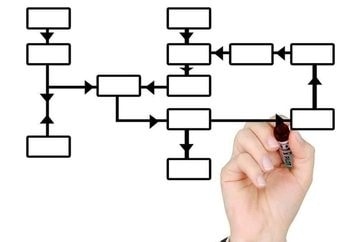
What is business analysis?
What is Business Analysis?
The purpose of this article is to explain the definition of business analysis, and what it’s purpose is within an organisation. This article follows on from my previous article of What is a Business Process?
I am using the Business Analysis Body of Knowledge (BABOK v3) as a reference for these posts so that I can learn and consolidate the information in my mind whilst also sharing the information with a broader audience.
My interpretation is that business analysis is a structured approach to business improvements to solve specific problems within a business. Business analysis includes defining what the problem is, who the problem impacts, what the solution is and what needs to happen to implement the best solution to the problem for the business or organisation.
People who perform business analysis activities are usually called Business Analysts. They generally work on projects of improvement. A Project Manager oversees the project to ensure the project is successful. There is a whole body of work that goes into the set-up of a project that is explained under project management methodologies. Projects can be small or very large and complex.
Who performs business analysis?
A person who performs business analysis tasks as described above is a Business Analyst. They may have a different job title but still perform these tasks. A few other titles for business analyst include business systems analyst, data analyst, business architect, enterprise analyst, management consultant, process analyst, product manager/owner and systems analyst. Their main role is to ensure that the solution to the business problem meets the needs of all the parties who have an interest in the solution and that the chosen solution is designed, developed and delivered according to those needs. Often, someone who is a subject matter expert in a particular business area is given the task of performing the business analysis tasks as they are already familiar with the business and its problems.
Business Analysis Knowledge Areas
The business analysis profession describes different stages of the tasks that a business analyst undertakes to enable valuable change within an organisation. In order to bring about that change, a business analyst usually works systematically through all of these key knowledge areas (BABOK v3):
- Business analysis planning and monitoring
- Elicitation and collaboration
- Requirements life cycle management
- Strategy analysis
- Requirements analysis and design definition
- Solution evaluation
These knowledge areas are in-depth topics, containing specific expertise that includes many tasks. The Business Analysis Core Concept Model (BACCM) (BABOK v3) shows the relationships that play an important role when implementing any kind of change in a business. Business Analysts manage these relationships by applying and implementing these key knowledge areas to the problem to achieve the desired outcome.
The Business Analysis Core Concept ModelTM
This framework shows the relationships between the 6 core concepts of the BACCM. They are all essential components to business analysis. They are used by business analysts to measure and monitor work done (BABOK v3).
For each business area, the business analyst applies the BACCM framework within its context. This ensures the correct tasks are completed with the relevant outputs produced for the business. As you can see, the areas are all dependent on each other.
What types of skills do you need for business analysis?
The business analysis skills needed include a combination of soft skills and hard skills/technical skills.
Soft Skills for Business Analysis
These are skills not exclusive to the business analysis arena. Some of the keys soft skills I think are important and so does the (BABOK v3), include, but are not limited to:
- good communication skills
- problem solving skills
- analytical skills
- interviewing skills
- conceptual thinking skills
- decision making skills
- the ability to quickly learn new things
- the ability to translate technical terms into business terms
- adaptability
- good time management skills
- general business knowledge.
Hard Skills for Business Analysis
These are the more technical skills or required to perform business analysis activities. They are important business analysis techniques used by business analysts. Some of these include, as listed in the BABOK v3:
- acceptance and evaluation criteria
- benchmarking and market analysis
- business capability analysis
- business rules analysis
- concept modelling
- data flow diagrams
- decision analysis
- document analysis
- financial analysis
- functional decomposition
- item tracking
- metrics and key performance indicators (KPIs)
- non-functional requirements analysis
- prioritisation
- process analysis
- process modelling
- prototyping
- risk analysis
- root cause analysis
- stakeholder list, map or personas
- state modelling
- SWOT analysis
- use cases and scenarios
- user stories
- vendor assessment
- workshops.
A business analyst needs the right tools to be able to perform their jobs. These tools are usually software applications designed to make the task easier and more efficient. The business analyst may also use very specific tools for specific jobs. An example is a tool for gathering and recording requirements. Various tools are used for collaboration, sharing of information, creating and maintaining outputs/documentation, measuring and monitoring progress and change, modelling concepts and tracking issues. Business analysts also use tools to increase productivity. Each organisation’s specific needs will determine the tools they use.
Conclusion of what is business analysis?
This article has covered what business analysis is and provided a basic understanding of the tasks and key fundamental skills that a business analyst needs to perform business analysis. The article has also briefly touched upon the 6 key knowledge areas as outlined in the BABOK together with the BACCM. Business analysis is the practice of many techniques and tools combined to support a business with improvement and change. Each business/organisation uses their own unique combination of tools and techniques to investigate, recommend and then implement the correct solution for their business.
If you are looking for help with your business analysis then contact us today!



